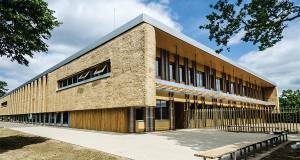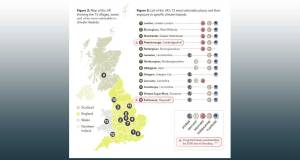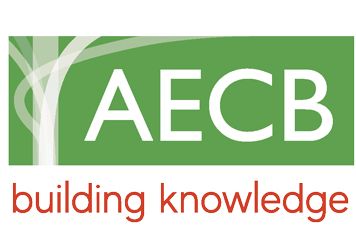- General
- Posted
AECB launches two levels of retrofit standards
The Association for Environment Conscious Building (AECB) has introduced a new retrofit standard catering for hard-to-treat homes and cases where homeowners want to take urgent action on climate change but are not currently able to commit to a deep retrofit.
This article was originally published in issue 43 of Passive House Plus magazine. Want immediate access to all back issues and exclusive extra content? Click here to subscribe for as little as €15, or click here to receive the next issue free of charge
In a move designed to broaden the application of retrofit standards and acknowledge increasingly compelling environmental arguments for the use of heat pumps for space heating as the electricity grid decarbonises, the AECB has introduced the tiered Level 1 and Level 2 Retrofit Standards. In brief, Level 1 is designed to support a rapid transition to low carbon heating and requires reasonably light touch improvements to insulation and airtightness levels and the installation of mechanical ventilation, with heat pumps designed to run at low flow temperatures. Meanwhile Level 2 is effectively a rebrand of the AECB’s pre-existing retrofit standard and requires more significant fabric improvements.
AECB CEO Andy Simmonds said: “We’ve challenged ourselves on the deep retrofit agenda. Deep retrofit is a very meaningful, useful thing to be doing, but it’s not the only thing we should be doing. We clearly need to be getting off fossil fuels rapidly. Heating by electric heat pumps offers an easy and potentially cheap route when combined with relatively light fabric retrofit, so it’s not an intrusive approach.”
Simmonds added that the tiered approach would require Level 1 retrofits to be designed with a long-term plan and the potential for future upgrades in mind. “One of the things we’ve been worried about in the past is people doing shallow retrofits which lock out future improvements,” he said. “So, the standard we’ve developed is designed to not block that second deeper retrofit. We’ve been looking at what happens if you have two waves of retrofit - a Level 1 [becoming] a Level 2 over time. Level 1 is either a step towards a deeper retrofit or those buildings may well be sitting there operating at that level for 10 or 20 years.”
Simmonds said the Level 1 standard recognises that switching from fossil fuel heating to heating by heat pumps is “the single easiest and cheapest measure to reduce both operational and embodied carbon whilst keeping homes warm. As such for many buildings it may not require the deeper fabric retrofit measures needed to achieve the AECB Level 2 Retrofit Standard – but it does require good ventilation measures.”
The Level 1 standard has been designed to ensure appropriately designed heat pump installations without worsening heating bills – short term issues with energy prices notwithstanding. However, it is assumed that many properties will later be taken to Level 2 to further reduce operational carbon and energy bills, and to again improve on building occupants’ health and comfort.
Simmonds said that for Level 1 & 2 retrofits there should be a clear focus on minimising upfront carbon emissions from materials used in the retrofit.
The Level 1 standard is predicated on running heat pumps at low flow temperatures via existing radiators and additional radiators or underfloor heating, as required, in order to have a sufficiently large heating emitter to enable the heat pump to run at reasonable efficiencies.
The Level 1 standard also requires pragmatic building fabric improvements, including a relatively modest airtightness target of 5 m3/hr/m2 at 50 Pa, and ensuring at least reasonable insulation and glazing standards where possible, along with either a heat recovery ventilation or mechanical extract ventilation system. Meanwhile the Level 2 standard is effectively a rebrand of the AECB’s pre-existing retrofit standard, which adds a space heating demand target of 50 kWh/m2/yr, and tightens the airtightness target to 2 m3/ hr/m2 at 50 Pa.
The retrofit standards follow the same approach as the association’s badge for new build, the AECB Building Standard, in that they rely on the software used to design buildings to the Passive House Institute’s suite of new build and retrofit standards, the Passive House Planning Package (PHPP). As per the AECB Building Standard, the AECB Level 1 and Level 2 Retrofit Standards set less onerous targets than the equivalent passive house standards, and while the passive house standard requires independent certification, the AECB standards rely instead on self-certification, backed up by random auditing from AECB experts.
Instead of the situation where building owners seeking to retrofit find that the Enerphit standard may be beyond their reach and are left without guidance and standards to pitch for, the new retrofit standards could be conceived of as part of a spectrum with Enerphit, meaning that AECB standards can be achieved where Enerphit isn’t practical, or that building owners and industry professionals can migrate from AECB standards to Enerphit over time, projects permitting.
Sally Godber, director of leading passive house certifier and trainer Warm welcomed the introduction of the new standards, and said they’d be particularly useful for people keen to take immediate action on climate. “For the private residential market, for people who don’t have a massive budget to put into a retrofit, this is the guidance they need,” she said. “This is something which is achievable in a relatively shortterm time frame. For individuals who are freaked out, you can give them something really meaningful in terms of a long-term plan and some actions they can take now. Those kinds of conversations you have with friends and family, this is what I’ll be steering them towards.”
Godber praised the new standards’ tiered approach, and the requirement with Level 1 retrofits to plan for the possibility of further, deeper interventions. “It’s absolutely crucial that any retrofit standard has the end in mind and doesn’t lock in problems. They’ve got that which I think is really great.” Godber has found less considered approaches to retrofit all too common. “We’ve reviewed so many retrofit projects where problems have been locked in. They haven’t got the energy savings or comfort they wanted, and they have to undo the retrofit measures that were already done.”
Godber said that any retrofit standard must have the end goal in mind. “How you deal with the likes of eaves details – the details that can only be done once,” she said. “I hope that will inform choices, and that retrofit plans will be used to avoid lock in.”
In something of a policy vacuum on meaningful deep retrofit planning, Godber said the AECB’s standards offered hope. “There isn’t the leadership in the UK to push the fabric first and heat pump agenda. This standard allows for that critical mass for homeowners to do something rather than waiting for policy change,” she said.
“I’m inspired by the AECB thinking of the question of what is practically achievable – what’s realistic. It makes it achievable to make inroads into our existing building stock in a meaningful way.” Visit www.aecb.net/aecb-retrofit-standard for more information.
Related items
-
Retrofit redux: Catching up with A3
-
The transformative power of industrialised retrofit
-
 September’s AECB environmental construction conference seeks to spark debate among industry experts
September’s AECB environmental construction conference seeks to spark debate among industry experts -
 Material matters - A palette for a vulnerable planet
Material matters - A palette for a vulnerable planet -
 Climate report warns overheating crisis threatens UK
Climate report warns overheating crisis threatens UK -
 Sustainable building leaders crowned at Exemplar Awards
Sustainable building leaders crowned at Exemplar Awards


